

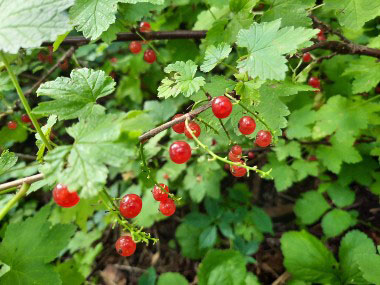
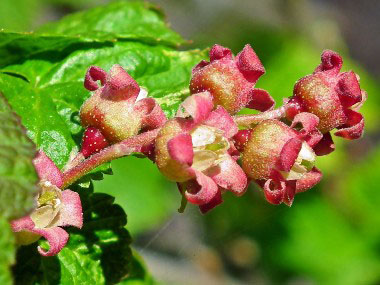
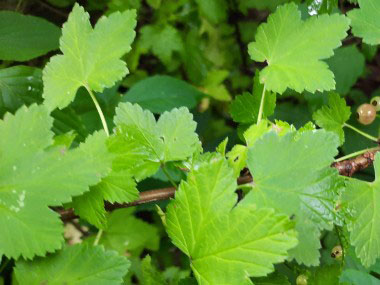
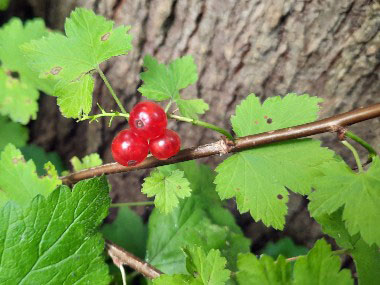
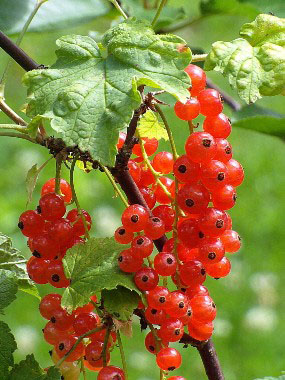
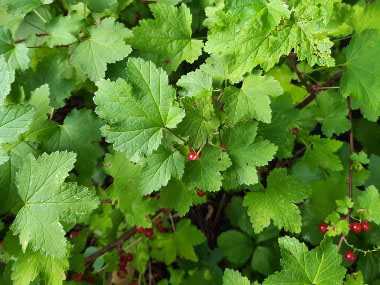
To support our efforts please browse our store (books with medicinal info, etc.).
Northern red currants are in the Grossulariaceae family which consist of many species of both currants and gooseberries. Currants are distinguished by their lack of spines, prickles, or thorns on the stems, which all gooseberries have to some degree. Also, red currants have clusters of minimum six flowers, where gooseberries have clusters of only 1 to 4 flowers. In addition to being a wild deciduous shrub, red currants are also commonly cultivated. Northern red currants are native to North America and are also found in northeast Asia.
Trunk/Bark
Stems are erect to ascending. As the shrub ages, stems become brownish to gray and lack spines or prickles.
Branches/Twigs
New twig growth is green, with a mix of glandular and non-glandular hairs. It becomes smooth and dark reddish with white lenticels.
Height
Ribes triste typically reaches heights up to 1 metre (3’).
Leaves/Needles
Northern red currant shrubs have leaves with three to five shallow lobes with bluntly toothed edges and palmate veins. The leaves are alternate and are usually wider than they are long. They measure on average 8cm (3”) wide and 6cm (2”) long. Leaf undersides are pubescent, without yellow resinous dots.
Flowers
The flowers are in bloom anytime from late April to June depending on geographic location. Flowers grow in drooping racemes, and there can be just over 12 flowers in a raceme. Flowers are saucer-shaped and greenish-red to pinkish-red in colour. Flowers are very small, about 6 mm in diametre. Flower peduncles have glandular hairs. It takes three to five years before this shrub will produce fruit.
Fruit
The northern red currant berries are round to egg-shaped. They are shiny and vibrant red when ripe. They typically are small, measuring 1cm or less.
Habitat
Northern red currants tend to thrive in moist soils in part shade although it will grow in sunny locations. They can be found near sources of water and the edges of moist forests.
Edible Parts
Ripe fruit can be eaten raw or cooked despite having several seeds in each fruit. They have a pleasant, yet somewhat acidic flavour. The fruit is packed with antioxidants and are a great source of iron, as well as vitamins C and K.
Other Name
Swamp Red Currant.
Recipes
Winter Survival Food Handbook

PDF Plant Magazines
Types of Wild Food
Geographic Zones Seasons
Disclaimer
EdibleWildFood.com is informational in nature. While we strive to be 100% accurate, it is solely up to the reader to ensure proper plant identification. Some wild plants are poisonous or can have serious adverse health effects.
We are not health professionals, medical doctors, nor are we nutritionists. It is up to the reader to verify nutritional information and health benefits with qualified professionals for all edible plants listed in this web site. Please click here for more information.
Why Edible Wild Food?
- Food costs are rising
- Free, wild food is readily abundant
- Wild food adds nutrition to your diet
- Wild food can help treat various medical conditions





